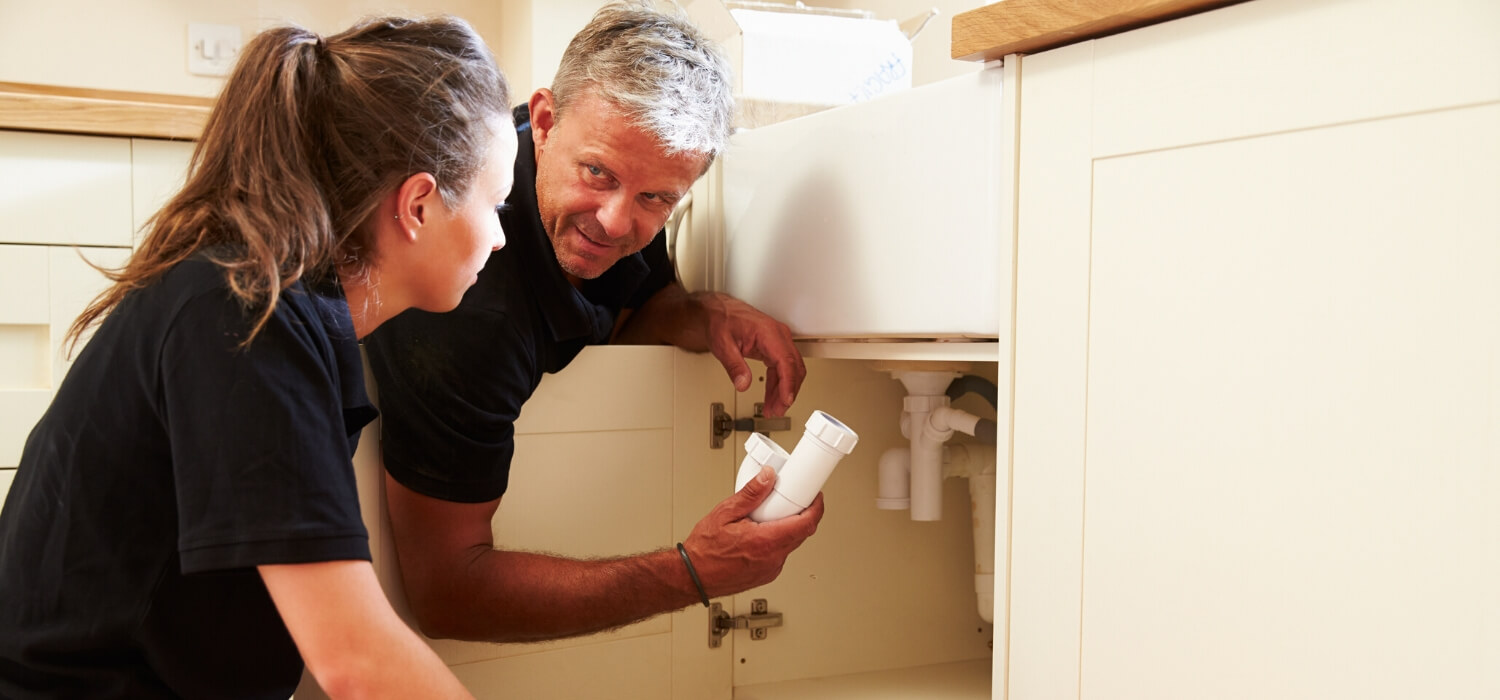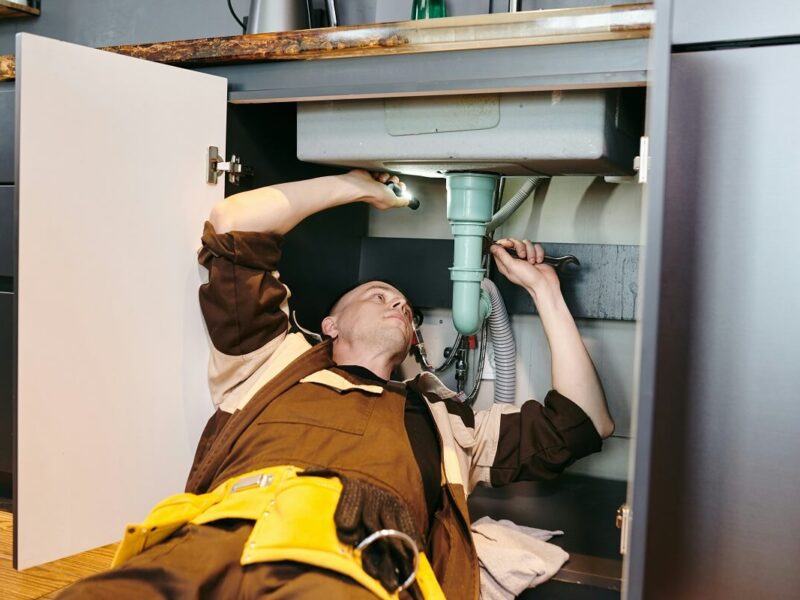Learning the Core Concepts of Home Plumbing: A Beginner's Introduction
Go Deal NowThe article author is making a few great pointers regarding Plumbing basics: How your home plumbing works overall in this content directly below.

Plumbing is an important element of any home, responsible for providing tidy water for alcohol consumption, food preparation, and bathing, in addition to eliminating wastewater safely. Understanding the basics of home plumbing is vital for every single house owner to make certain proper maintenance, troubleshooting, and, if necessary, repair services. In this novice's guide, we'll cover the fundamental principles of home plumbing to aid you come to be a lot more knowledgeable about just how it works.
Supply Of Water System
The water system brings clean water right into your home from a municipal water source or an exclusive well. It includes a primary water line that connects to your home's plumbing system, generally located underground. A water meter determines the quantity of water consumed, while a shut-off valve permits you to control the circulation of water right into your home.
Plumbing Fixtures
Plumbing components are gadgets that deliver water to different parts of your home and include sinks, taps, commodes, showers, tubs, and appliances such as dishwashers and cleaning devices. Each component is attached to the water supply system using pipelines and installations and might have its shut-off valve for upkeep or emergency situations.
Water Heating Unit
The water heater is in charge of home heating water for residential usage, including showering, food preparation, and cleansing. Common types of water heaters consist of tank-type hot water heater, tankless (on-demand) hot water heater, and heatpump water heaters. The hot water heater is connected to the water system and supplies hot water to plumbing components as needed.
Water drainage System
The water drainage system removes wastewater from your home and lugs it away to a sewer treatment facility or septic tank. It contains a network of pipes, fittings, and components that transfer wastewater from plumbing components to the primary sewage system line or sewage-disposal tank. Proper water drainage is essential to avoid clogs, back-ups, and sewer leakages.
Air flow System
The ventilation system helps maintain correct atmospheric pressure and stop drain gases from entering your home. Vent pipelines, likewise referred to as vent heaps, prolong from plumbing fixtures to the roof covering, enabling drain gases to escape securely outside. Air flow pipes additionally enable air to enter the drain system, facilitating smooth wastewater circulation and avoiding suction or vacuum cleaner effects.
Typical Plumbing Devices
Having the right tools accessible is vital for executing basic plumbing repair services and upkeep tasks. Typical plumbing tools include flexible wrenches, monkey wrench, pliers, pipe cutters, hacksaws, plungers, augers (or drainpipe serpents), and Teflon tape. Having these tools readily offered can assist you tackle small plumbing concerns effectively.
Basic Plumbing Fixings
While some plumbing repair services may call for expert assistance, lots of usual problems can be addressed with fundamental DIY methods. Discovering how to fix a leaking faucet, unblock a drainpipe, replace a toilet flapper, or fix a trickling showerhead can conserve you time and money on plumbing repair services.
Verdict
Recognizing the fundamentals of home plumbing is necessary for every property owner to preserve a safe, useful, and reliable plumbing system. By acquainting on your own with the supply of water system, plumbing components, drainage system, air flow system, usual plumbing devices, and fundamental fixings, you can confidently deal with minor plumbing issues and ensure your home's plumbing system operates smoothly.
Plumbing for Beginners: A Comprehensive Guide
If you’re a beginner when it comes to plumbing, don’t worry; you’re not alone. Plumbing may seem intimidating, but with the right knowledge and a little practice, you can handle many common plumbing issues on your own. In this comprehensive guide, we will demystify the world of plumbing for beginners, providing you with the basic knowledge and skills needed to tackle common plumbing problems and even take on some DIY plumbing projects.
The Importance of Basic Plumbing Knowledge for Beginners:
First and foremost, basic plumbing knowledge gives you a solid foundation. It helps you grasp the key concepts and terminology that are essential in this field. By learning the basics, you’ll be able to build upon that knowledge and tackle more complex plumbing tasks in the future.
Having a basic understanding of plumbing also enables you to handle common issues that may arise in your home. Picture this: a leaky faucet or a clogged drain. With some basic plumbing knowledge, you’ll have the confidence to troubleshoot and fix these problems on your own. It saves you from unnecessary expenses and the hassle of waiting for a professional to arrive.
As a beginner, learning the basics of plumbing empowers you to take care of your own home. It gives you a sense of independence and self-reliance. You’ll no longer have to rely solely on professionals for every small issue that pops up. Instead, you can handle many tasks yourself, saving time and money in the process.
Remember, everyone starts as a beginner. Embrace the learning process and take small steps to expand your plumbing knowledge. There are plenty of online resources, tutorials, and even local workshops that talk about plumbing for beginners.
Essential Tools for Plumbing for Beginners
As you start your plumbing journey, having the right tools in your toolbox is crucial. Let’s explore some of the must-have tools:
Adjustable Wrench:
This versatile tool is a staple in any plumber’s toolbox. It allows you to tighten or loosen nuts and bolts of various sizes. Make sure to have an adjustable wrench with a comfortable grip.
Pipe Wrench:
A pipe wrench is specifically designed for gripping and turning pipes. It has serrated jaws that provide a strong grip, making it easier to loosen or tighten threaded pipes and fittings.
Plunger:
The plunger is a simple yet effective tool for clearing clogged drains and toilets. It creates suction when you push and pull, helping to dislodge blockages. Keep a good-quality plunger handy for those unexpected clogs.
Pipe Cutter:
When it comes to cutting pipes, a pipe cutter is your go-to tool. It creates clean, precise cuts without damaging the pipe. Look for a pipe cutter that can handle the pipe sizes you’re working with.
Hacksaw:
A hacksaw is useful for cutting through pipes, screws, and other materials. It’s a versatile tool that can handle different cutting tasks. Remember to use a blade suitable for cutting metal.
Tape Measure:
Accurate measurements are crucial in plumbing. A tape measure allows you to measure pipe lengths, distances, and dimensions accurately. Opt for a sturdy tape measure that extends a good length.
Pliers:
Pliers come in handy for various tasks, such as gripping, bending, and cutting. Slip-joint pliers with adjustable jaws are great for gripping pipes, nuts, and bolts.

Hopefully you enjoyed our post about How Does the Plumbing Work in Your Home?. Thanks a ton for taking time to read through our post. Enjoyed reading our write-up? Please share it. Let other people check it out. I truly appreciate reading our article about Plumbing basics: How your home plumbing works.
Call Today